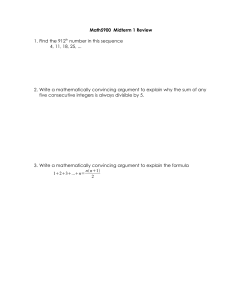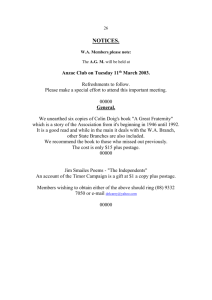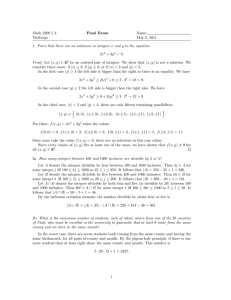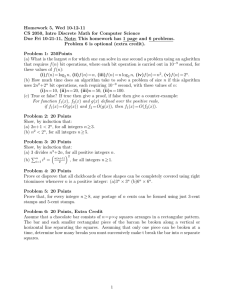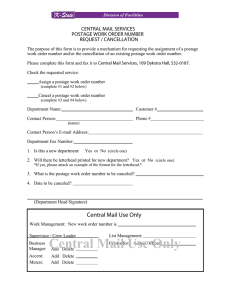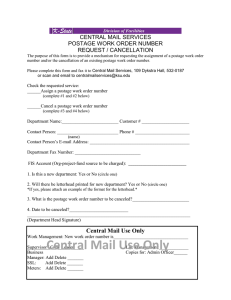Prepared by Ben Jiang Question 2 Let S
advertisement
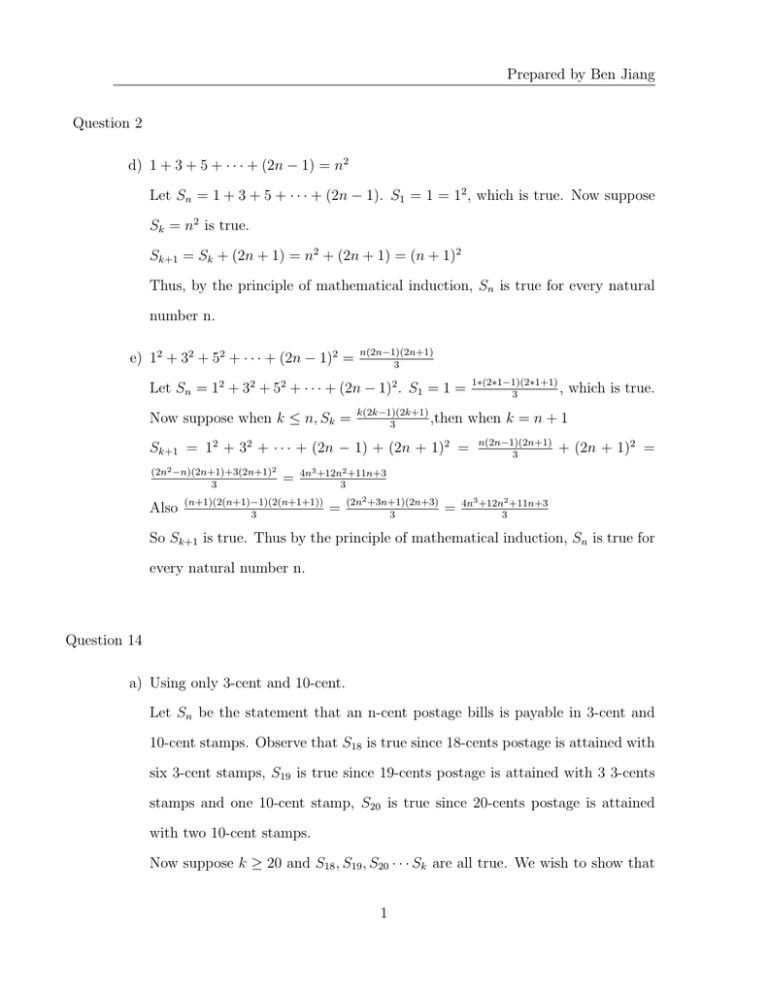
Prepared by Ben Jiang Question 2 d) 1 + 3 + 5 + · · · + (2n − 1) = n2 Let Sn = 1 + 3 + 5 + · · · + (2n − 1). S1 = 1 = 12 , which is true. Now suppose Sk = n2 is true. Sk+1 = Sk + (2n + 1) = n2 + (2n + 1) = (n + 1)2 Thus, by the principle of mathematical induction, Sn is true for every natural number n. e) 12 + 32 + 52 + · · · + (2n − 1)2 = n(2n−1)(2n+1) 3 1∗(2∗1−1)(2∗1+1) , 3 Let Sn = 12 + 32 + 52 + · · · + (2n − 1)2 . S1 = 1 = Now suppose when k ≤ n, Sk = k(2k−1)(2k+1) ,then 3 when k = n + 1 Sk+1 = 12 + 32 + · · · + (2n − 1) + (2n + 1)2 = (2n2 −n)(2n+1)+3(2n+1)2 3 Also = which is true. n(2n−1)(2n+1) 3 + (2n + 1)2 = 4n3 +12n2 +11n+3 3 (n+1)(2(n+1)−1)(2(n+1+1)) 3 = (2n2 +3n+1)(2n+3) 3 = 4n3 +12n2 +11n+3 3 So Sk+1 is true. Thus by the principle of mathematical induction, Sn is true for every natural number n. Question 14 a) Using only 3-cent and 10-cent. Let Sn be the statement that an n-cent postage bills is payable in 3-cent and 10-cent stamps. Observe that S18 is true since 18-cents postage is attained with six 3-cent stamps, S19 is true since 19-cents postage is attained with 3 3-cents stamps and one 10-cent stamp, S20 is true since 20-cents postage is attained with two 10-cent stamps. Now suppose k ≥ 20 and S18 , S19 , S20 · · · Sk are all true. We wish to show that 1 Prepared by Ben Jiang Sk+1 is true. Because Sk−2 is true, adding one more 3-cent stamp show that (k+1)-cents postage is attainable. That is Sk+1 is true. Thus, by the principle of mathematical induction, Sn is true for any n ≥ 18. b) Using only 4-cent and 10-cent. Consider any postage with value s can be attained using only 4-cent and 10cent. There exits integer p and q such that s = 4p + 10q = 2 ∗ 2 ∗ p + 2 ∗ 5 ∗ q = 2(2 ∗ p + 5 ∗ q) = 2k. The formula above shows that any postage stamps attained by using only 4-cent and 10-cent must be even. So postage stamps with odd value cannot be attained using only 4-cent and 10-cent. Therefore there are infinitely many postage bills cannot be paid using these denominations. c) Using only 3-cent and 12-cent. Consider any bills with value s can be paid using only 3-cent and 12-cent. There exits integer p and q such that s = 3p + 12q = 3p + 3 ∗ 4 ∗ q = 3(p + 4q) = 3k 0 So bills paid in 3-cent and 12-cent must be multiple of three. In other words, bills which are not multiple of three cannot be attained using only 3-cent and 12-cent. So there are infinitely many amount unachievable with these stamps. d) Conjecture conditions on number p and q p and q don’t have any common factor. Question 15 The mistake is that S1 cannot imply S2 . Because in case that there are two horses in the set, if we remove h1 or h2 , In addition to the other horse remained, there would not be any horses remaining in the H for us to conclude they have 2 Prepared by Ben Jiang the same color using the induction hypothesis. Since the base case is false, the whole induction cannot be true. 3
